Abstract
The current article suggests a possible synthesis of Skinner's (1957) treatment of verbal behavior with the more recent behavioral interpretation of language known as relational frame theory. The rationale for attempting to combine these two approaches is first outlined. Subsequently, each of the verbal operants described by Skinner is examined and subjected to a relational frame analysis. In each case, two types of operants are identified; one based on direct contingencies of reinforcement and the other based on arbitrarily applicable relational responding. The latter operants are labeled verbal because they can be distinguished from other forms of social behavior, and they appear to possess the symbolic or referential qualities often ascribed to human language. By applying relational frame theory to Skinner's verbal operants, we aim to contribute towards the development of a modern behavior-analytic research agenda in human language and cognition.
Keywords: verbal behavior, relational frame theory, verbal operants, language, cognition
Full text
PDF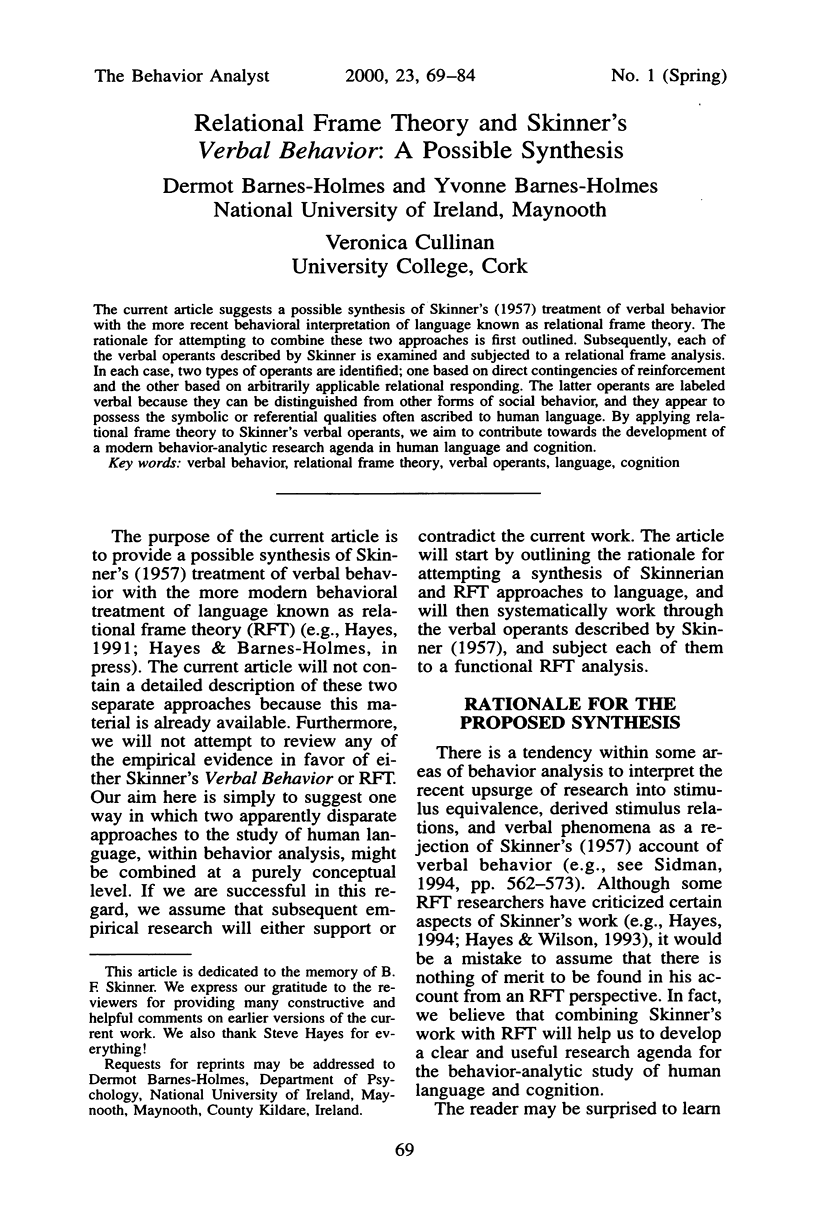


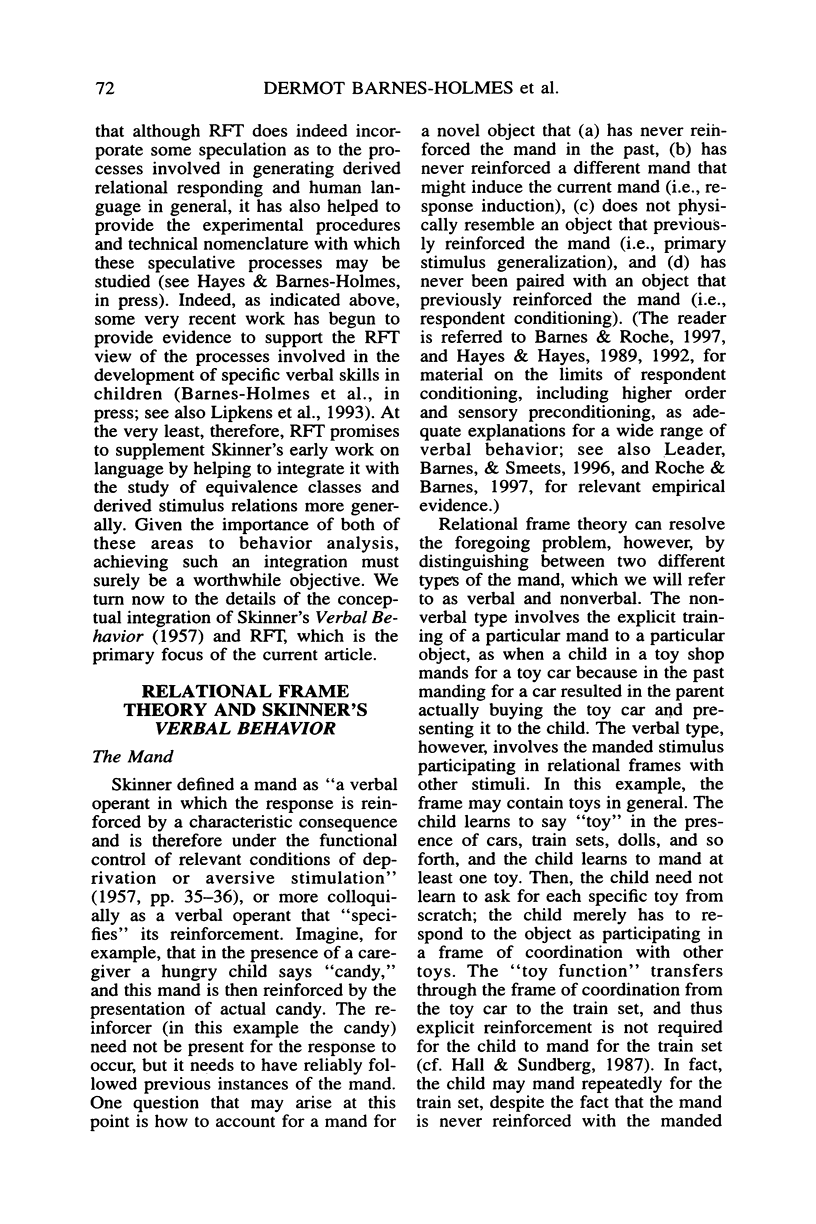

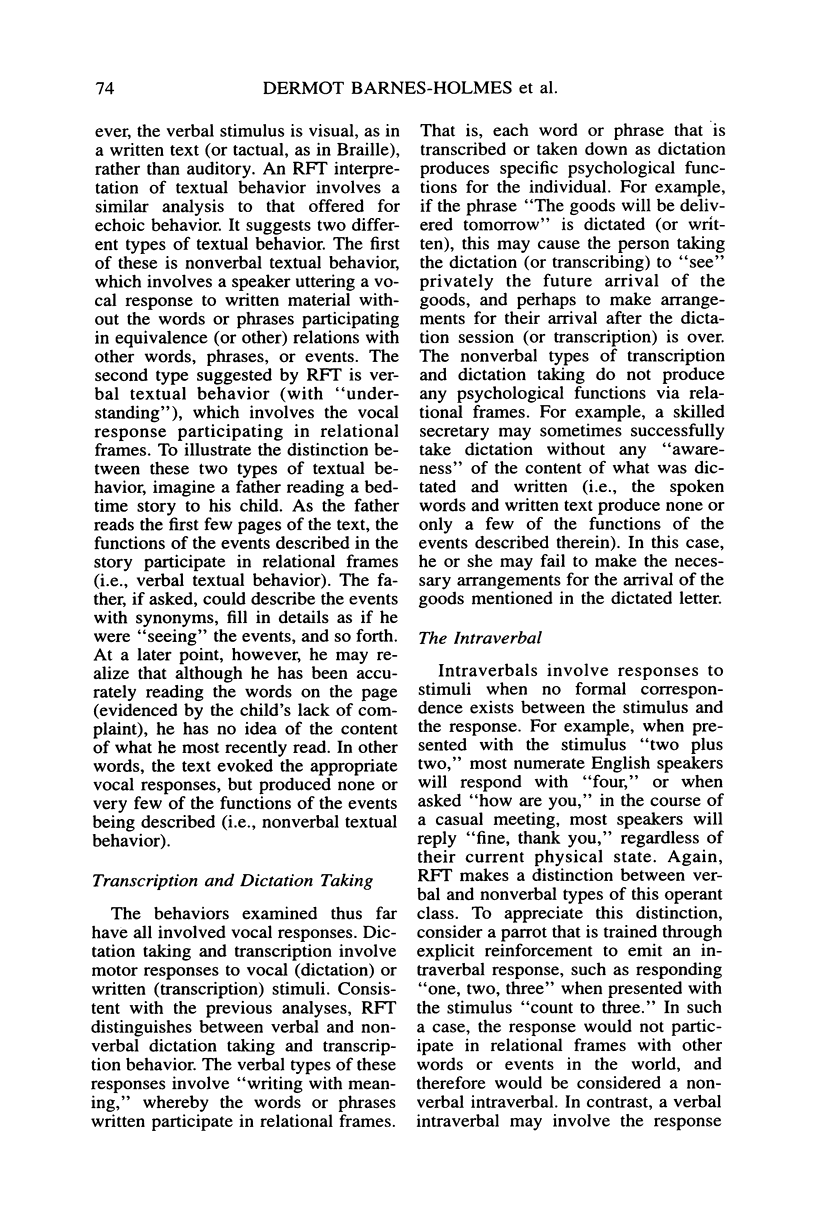
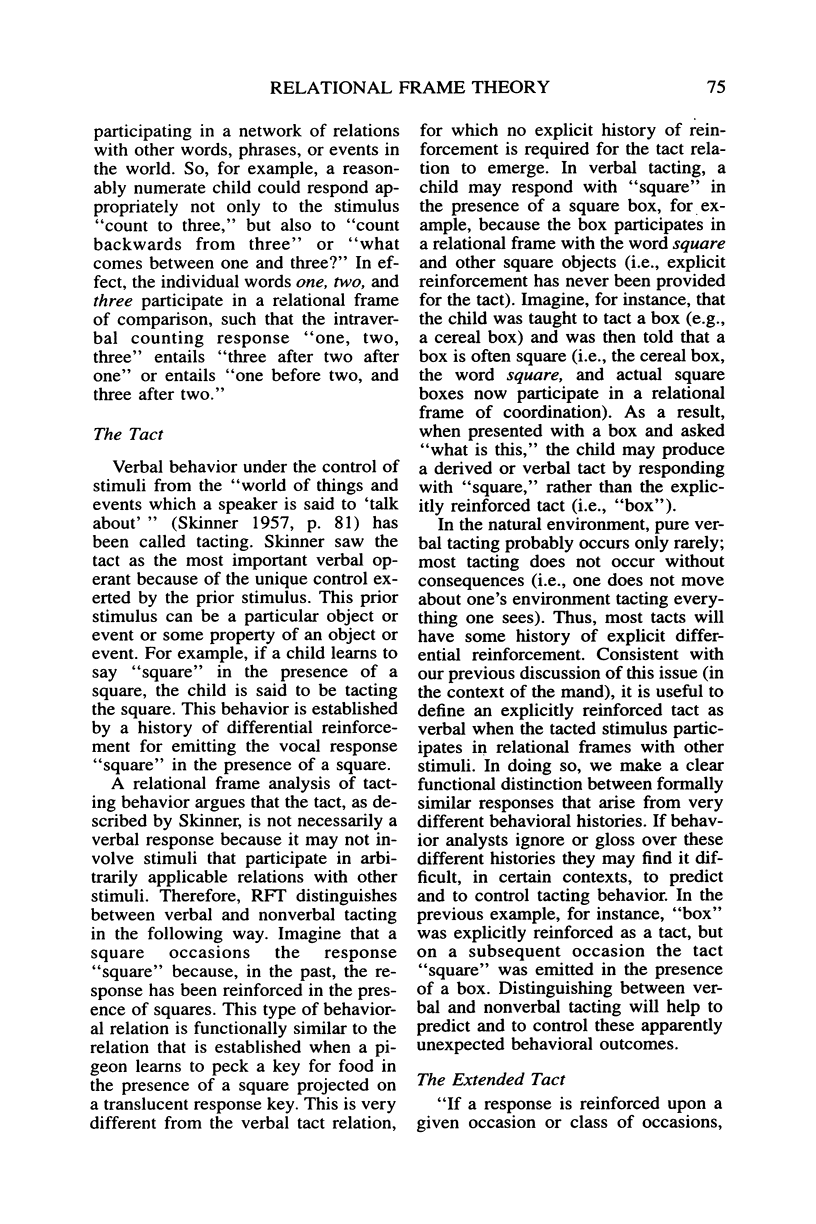
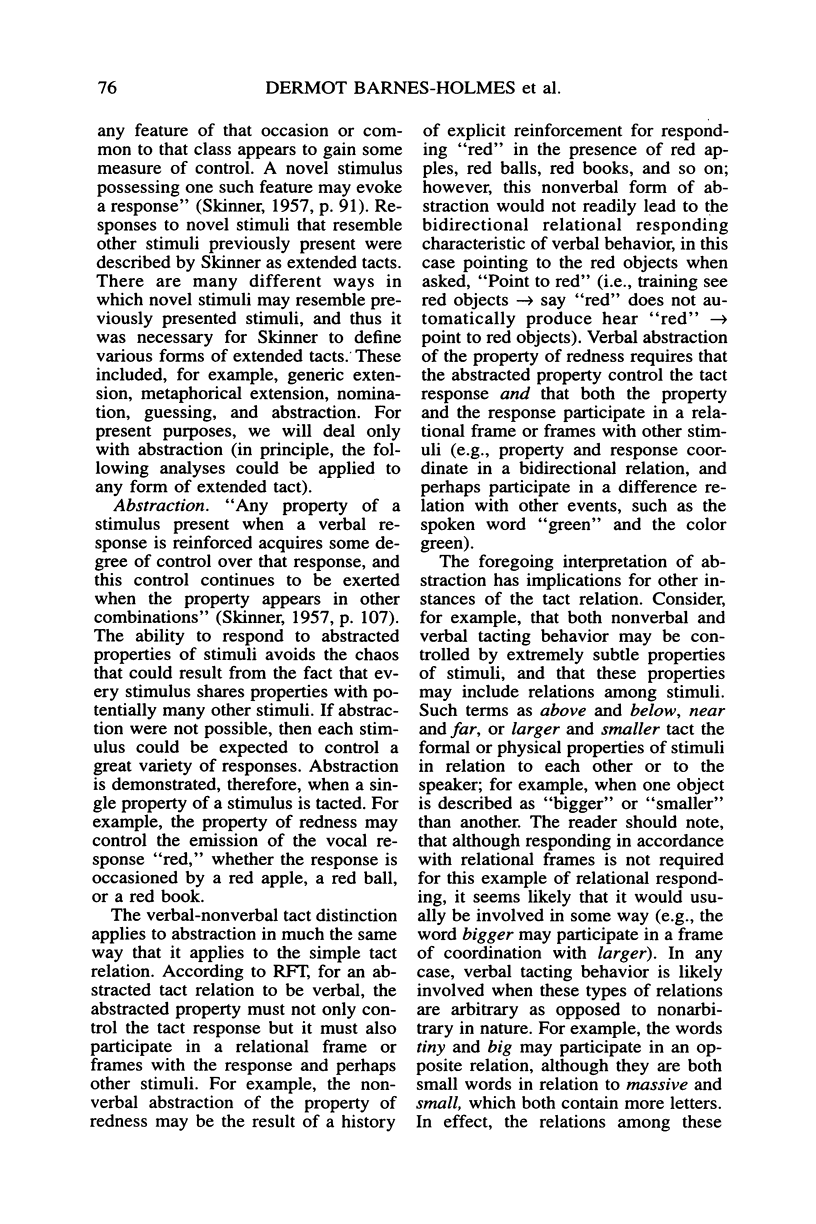

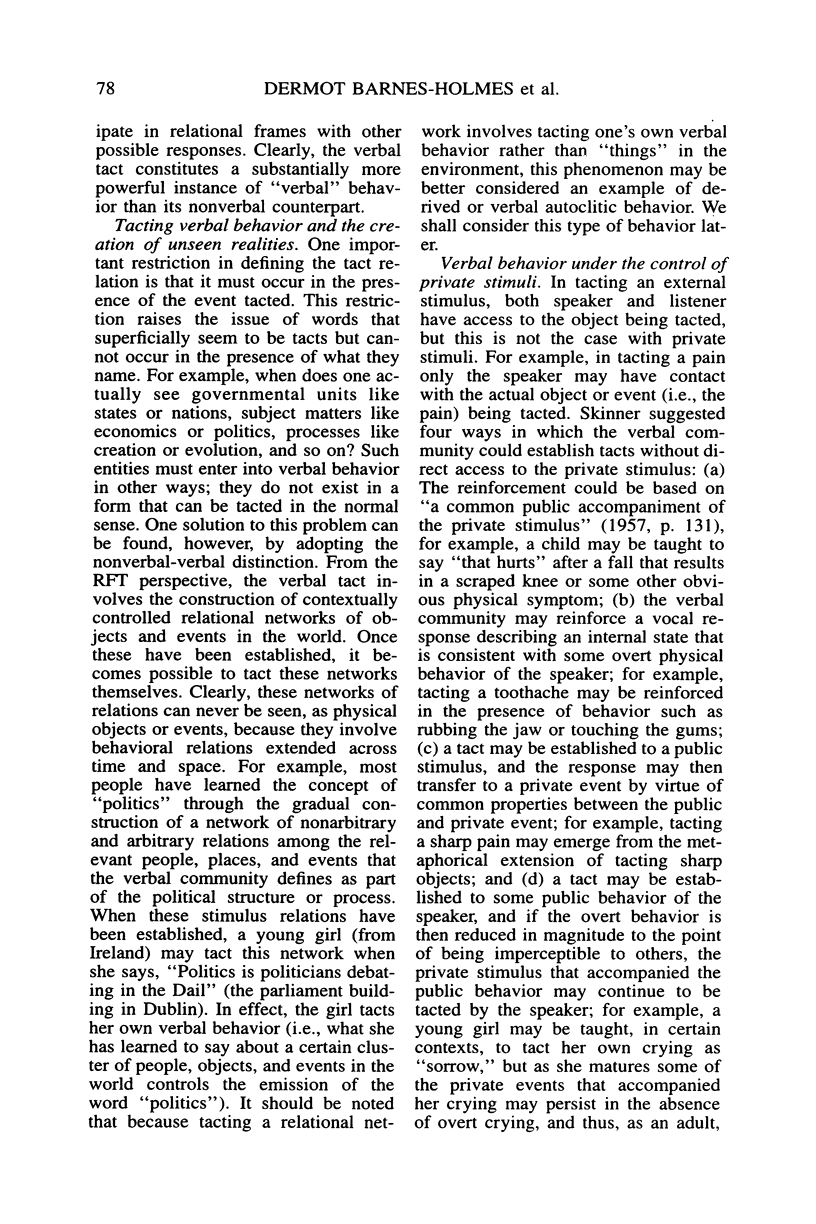

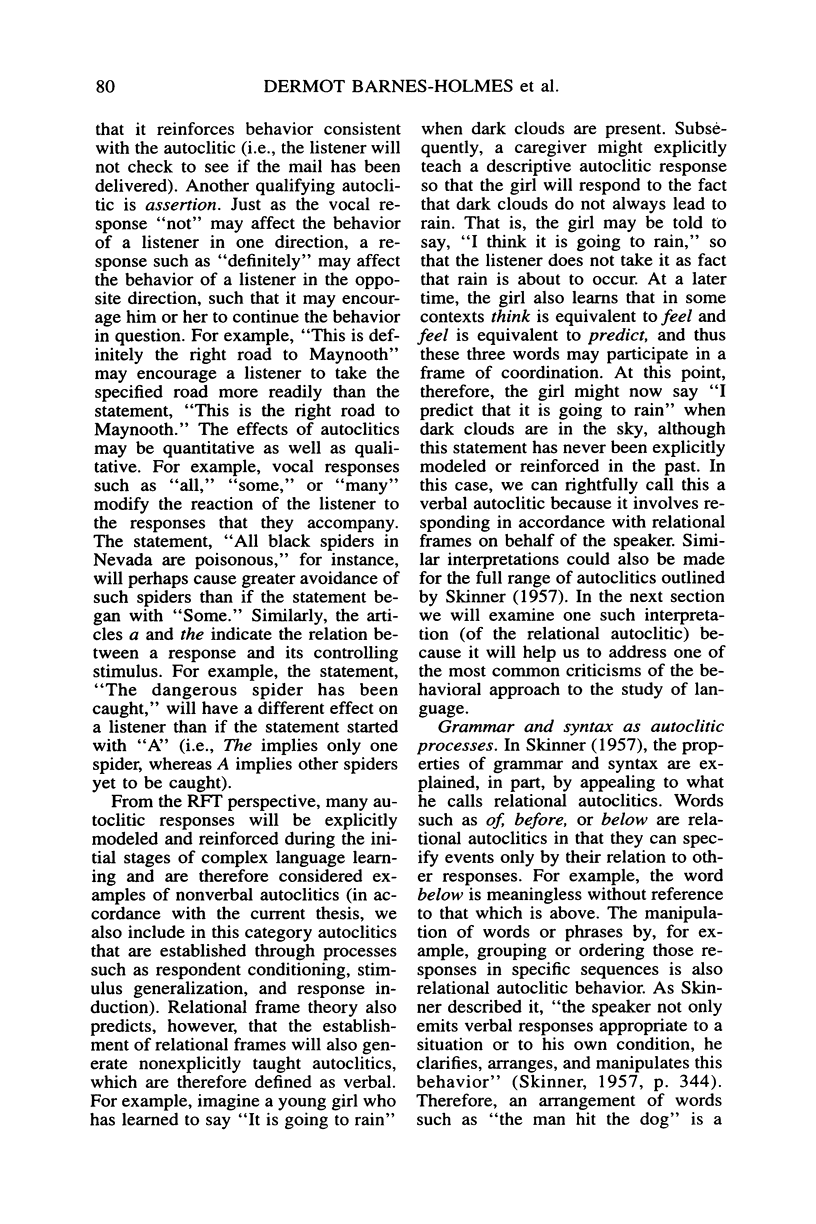
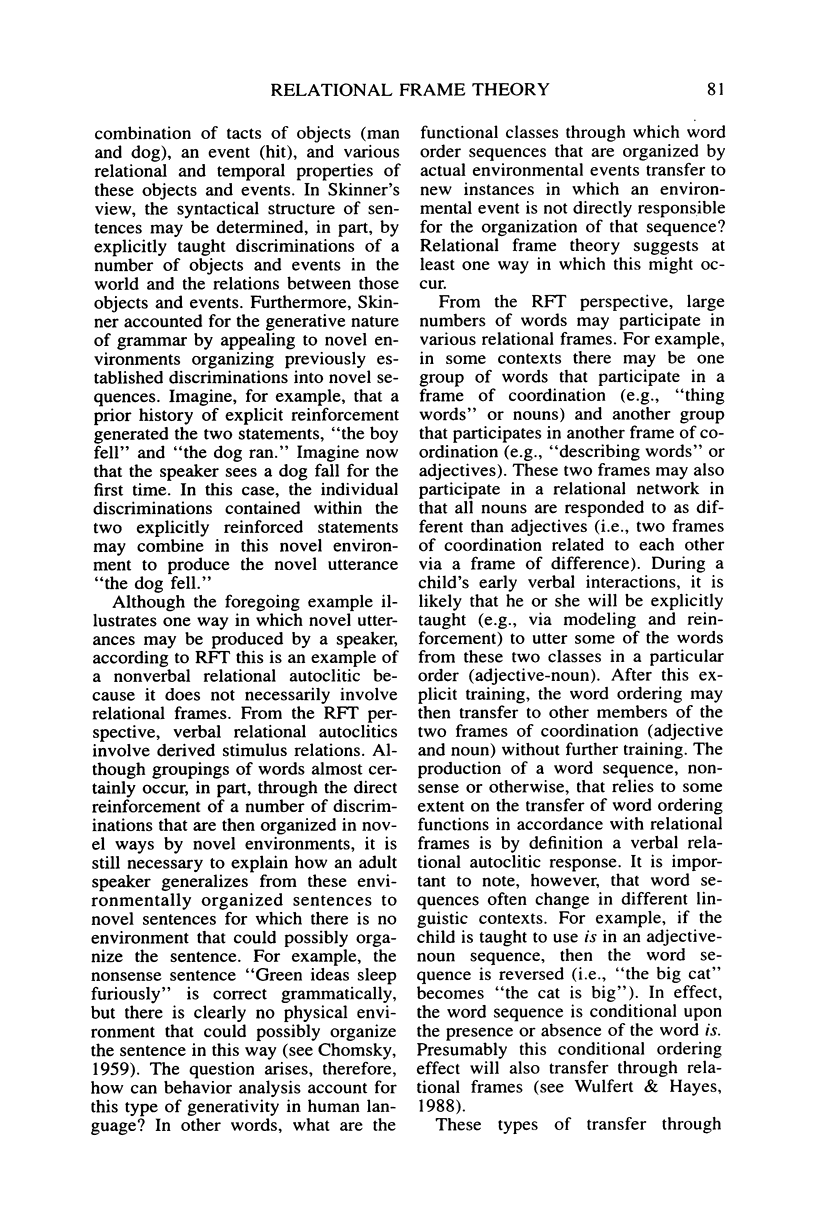

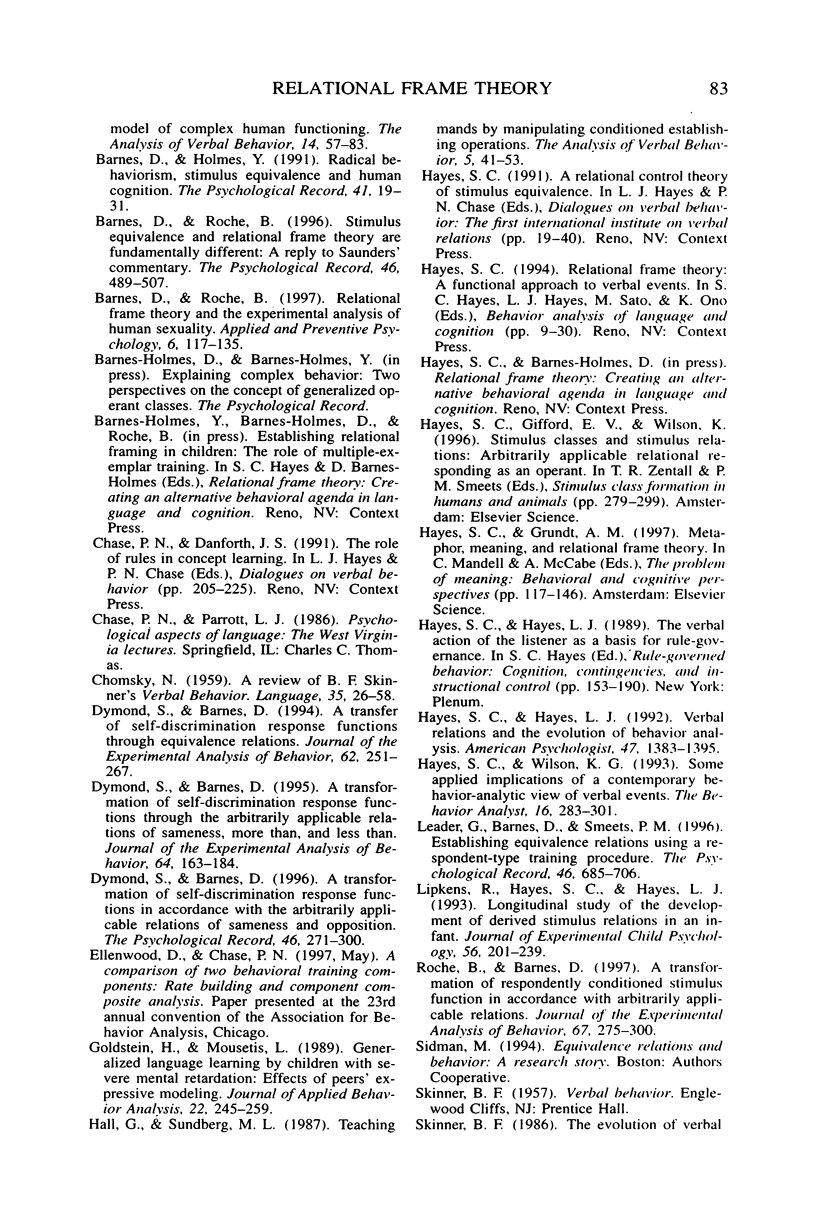

Selected References
These references are in PubMed. This may not be the complete list of references from this article.
- Barnes D. Naming as a technical term: Sacrificing behavior analysis at the altar of popularity? J Exp Anal Behav. 1996 Jan;65(1):264–267. doi: 10.1901/jeab.1996.65-264. [DOI] [PMC free article] [PubMed] [Google Scholar]
- Dymond S., Barnes D. A transfer of self-discrimination response functions through equivalence relations. J Exp Anal Behav. 1994 Sep;62(2):251–267. doi: 10.1901/jeab.1994.62-251. [DOI] [PMC free article] [PubMed] [Google Scholar]
- Dymond S., Barnes D. A transformation of self-discrimination response functions in accordance with the arbitrarily applicable relations of sameness, more than, and less than. J Exp Anal Behav. 1995 Sep;64(2):163–184. doi: 10.1901/jeab.1995.64-163. [DOI] [PMC free article] [PubMed] [Google Scholar]
- Goldstein H., Mousetis L. Generalized language learning by children with severe mental retardation: effects of peers' expressive modeling. J Appl Behav Anal. 1989 Fall;22(3):245–259. doi: 10.1901/jaba.1989.22-245. [DOI] [PMC free article] [PubMed] [Google Scholar]
- Hayes S. C., Wilson K. G. Some applied implications of a contemporary behavior-analytic account of verbal events. Behav Anal. 1993 Fall;16(2):283–301. doi: 10.1007/BF03392637. [DOI] [PMC free article] [PubMed] [Google Scholar]
- Lipkens R., Hayes S. C., Hayes L. J. Longitudinal study of the development of derived relations in an infant. J Exp Child Psychol. 1993 Oct;56(2):201–239. doi: 10.1006/jecp.1993.1032. [DOI] [PubMed] [Google Scholar]
- Roche B., Barnes D. A transformation of respondently conditioned stimulus function in accordance with arbitrarily applicable relations. J Exp Anal Behav. 1997 May;67(3):275–301. doi: 10.1901/jeab.1997.67-275. [DOI] [PMC free article] [PubMed] [Google Scholar]
- Skinner B. F. The evolution of verbal behavior. J Exp Anal Behav. 1986 Jan;45(1):115–122. doi: 10.1901/jeab.1986.45-115. [DOI] [PMC free article] [PubMed] [Google Scholar]
- Striefel S., Wetherby B., Karlan G. R. Establishing generalized verb-noun instruction-following skills in retarded children. J Exp Child Psychol. 1976 Oct;22(2):247–260. doi: 10.1016/0022-0965(76)90005-9. [DOI] [PubMed] [Google Scholar]
- Wulfert E., Hayes S. C. Transfer of a conditional ordering response through conditional equivalence classes. J Exp Anal Behav. 1988 Sep;50(2):125–144. doi: 10.1901/jeab.1988.50-125. [DOI] [PMC free article] [PubMed] [Google Scholar]


